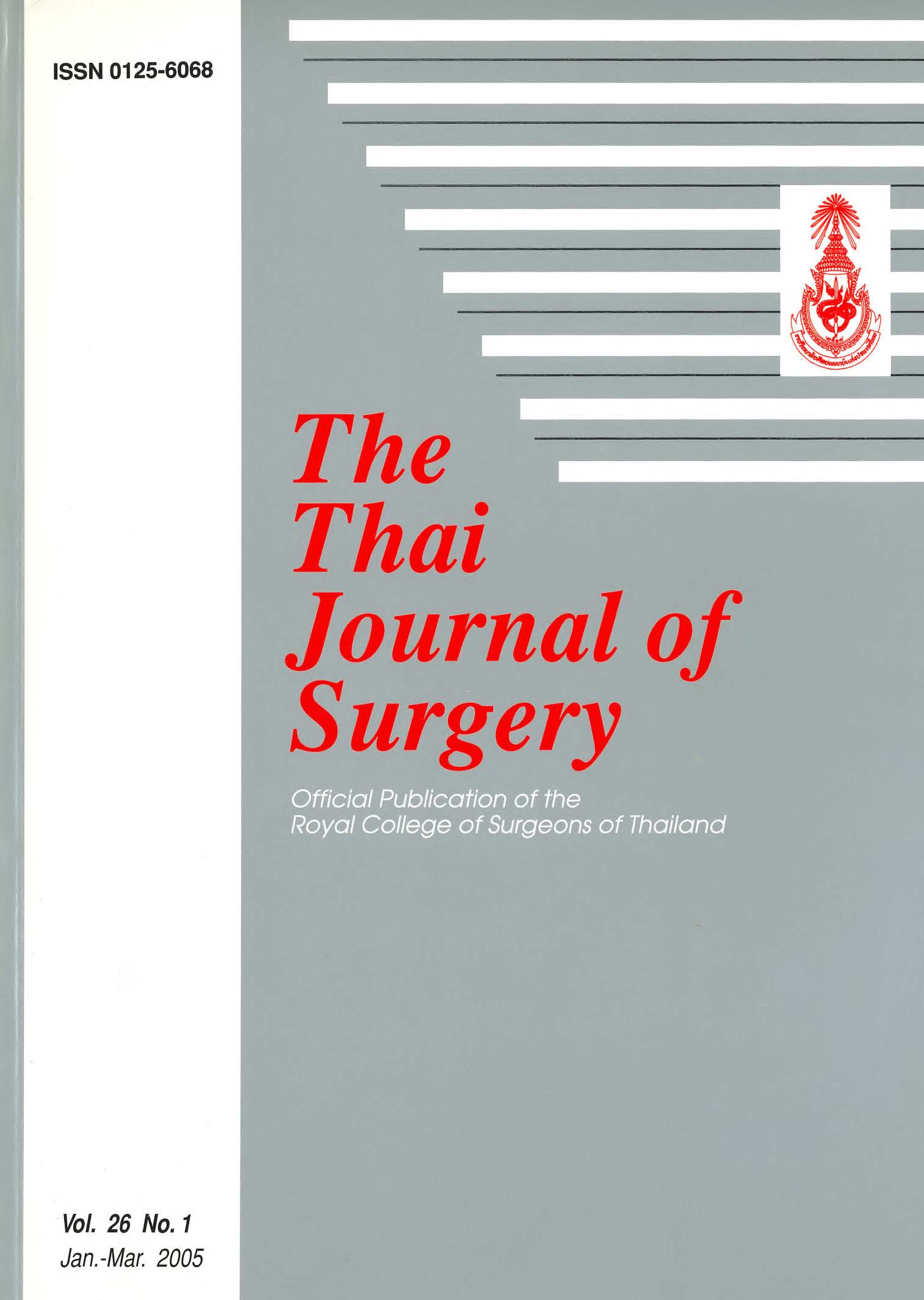Retrospective Comparison of One-stage versus Sequential ERCP and Laparoscopic Cholecystectomy in Patients with Symptomatic Gallstones and Suspected Common Bile Duct Stones
Abstract
Objective: To establish the feasibility and the results of one stage endoscopic retrograde cholangiopancreatography (ERCP) and laparoscopic cholecystectomy (LC) compared to the sequential ERCP and LC.
Patients and Methods: The results in 14 patients (7 males, 7 females, mean age 56.4 years) who underwent one-stage ERCP and LC were reviewed and compared to the results of 38 patients (11 males, 27 females, mean age 57 years) who underwent sequential ERCP and LC. The success rates, postoperative complications, overall operative time and length of hospital stay were analyzed.
Results: The one-stage group had LC success rate of 64%, 21% postoperative complication rate, with a median operative time of 155 minutes and a median hospital stay of 7 days. The sequential group had LC success rate of 92%, 8% postoperative complication rate, with a median operative time of 137 minutes and a median hospital stay of 8.5 days.
Conclusions: Single stage ERCP and LC can be performed with no significant differences in the overall operative time, postoperative complication rate and length of hospital stay.
References
2. Zaninotto G, et al. Sequential intraluminal endoscopic and laparoscopic treatment for bile duct stones associated with gallstones. Surg Endos 1996; 10: 644-8.
3. Barkun AN, Barkun J, Fried GM, et al. Useful predictors of bile duct stones in patients undergoing laparoscopic cholecystectomy. Ann Surg 1994; 220: 32-9.
4. National Institutes of Health Consensus Development Conference statement on gallstones and laparoscopic cholecystectomy. Am J Surg 1993; 165: 390-8.
5. Frances T, Barkun JS, Barkun AN. The elective evaluation of patients with suspected choledocholithiasis undergoing laparoscopic cholecystectomy. Gastrointest Endosc 2004;60:437-48.
6. Sarli L, lusco D, Sgobba G, Roncoroni L, Gallstone cholangitis: a 10-year experience of combined endoscopic and laparoscopic treatment. Surg Endosc 2002; 16: 975-80.
7. Ke ZW, Zheng CZ, Li JH, Yin K, Hua JD. Prospective evaluation of magnetic resonance cholangiography in patients with suspected common bile duct stones before laparoscopic cholecystectomy. Hepatobiliary Pancreat Dis Int 2003; 2:576-80.
8. Cemachovic I, Letard JC, Begin GF, Rousseau D, Nivet JM. Intraoperative Endoscopic Sphincterotomy is a reasonable option for complete single stage, Minimally invasive biliary stones treatment. Endoscopy 2000; 32: 956-62.
9. Golub R, Brodsky NM, Cantu R Jr, et al. Same session ERCP and cholecystectomy are safe and effective. Gastroenterology 1999;116: 4G 39.
10. Grahann SM, Flowers JL, Scott TR, et al. Laparoscopic cholecystectomy and common bile duct stones. Ann Surg 1993;218:61-7.
11. Enochsson L, Linberg B, Swahn F, Arnelo U. Intraoperative endoscopic retrograde cholangiopancreatography (ERCP) to remove common bile duct stones during routine laparoscopic cholecystectomy does not prolong hospitalization: a 2-year experience. Surg Endosc 2004; 18:367-71.
12. Nardi M Jr, Perri SG, Pietrangeli F, Amendolara M, Dalla Torre, Gabbrielli F, et al. "Sequential" treatment: is it the best alternative in cholecysto-choledochal lithiasis. Chir ltal 2002; 54:785-98.
13. Cuschieri A, Lezoche E, Morino M, Croce E, Lacy A, Toouli J, et al. E.A.E.S multicenter prospective randomized trial comparing two-stage vs single stage management of patient with gallstone disease and ductal calculi. Surg Endosc 1999; 13: 952-7.
Downloads
Published
How to Cite
Issue
Section
License
Articles must be contributed solely to The Thai Journal of Surgery and when published become the property of the Royal College of Surgeons of Thailand. The Royal College of Surgeons of Thailand reserves copyright on all published materials and such materials may not be reproduced in any form without the written permission.



